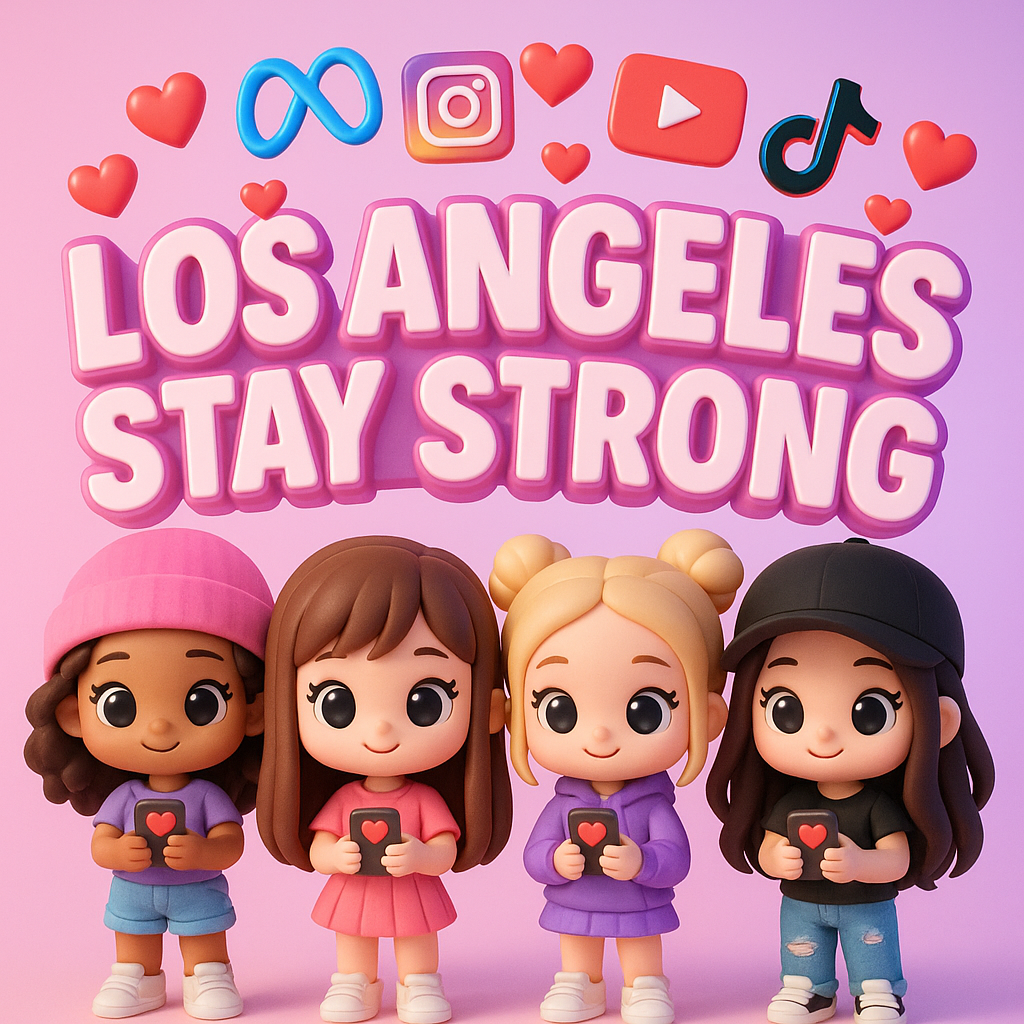
How the Ongoing LA Protest Is Creating a Ripple Effect Among Content Creators on Instagram and TikTok (By The Legion)
Article Written By Narcia From The Legion
As the streets of Los Angeles fill with protestors demanding justice and systemic change, the effects are reaching far beyond the city. Instagram and TikTok are quickly becoming digital extensions of the movement, with content creators playing a central role in shaping public perception and spreading awareness. What happens on the ground in LA is now reverberating globally through the lens of creators with smartphones, platforms, and influence.
From Lifestyle to Livestreams
Influencers once known for their curated feeds of fashion, beauty, or travel are now swapping aesthetics for activism. Many are using their platforms to post real-time protest footage, share educational resources, and speak out in solidarity. The pivot isn’t just about following a trend. It’s about responding to pressure from audiences who increasingly expect transparency and values-based content.
Content creators are adapting quickly. Whether they’re attending protests or amplifying voices from the front lines, their feeds are becoming a hybrid of personal brand and public witness. This moment is forcing creators to rethink what influence really means.
The Algorithm Is Watching
Engagement is surging around protest-related content. TikTok’s algorithm, which favors timely, emotionally resonant videos, is pushing footage of LA protests to the top of For You Pages worldwide. Instagram Reels, Stories, and Lives are also gaining traction, especially when creators combine protest visuals with strong captions, commentary, or calls to action.
For many influencers, this is an inflection point. Staying silent means risking relevance. Participation, when done authentically, can mean massive growth and genuine audience connection. But with that comes risk.
Performative or Powerful? Audiences Are Choosing
Followers are holding influencers accountable in real time. Those who post surface-level content without real engagement or action are being called out for performative activism. Audiences want more than hashtags. They’re looking for receipts: donations, protest attendance, community involvement, and resource sharing.
On the flip side, creators who show up meaningfully are gaining newfound respect and deeper loyalty from their followers. Some are even donating revenue from viral posts or branded content to protest-related causes, blurring the line between monetization and advocacy.
Brands Are Watching Too
The ripple effect extends into the business side of influencing. Brands are paying attention to which creators are taking a stand and how. While some companies prefer to avoid controversy, others are leaning into purpose-driven marketing and seeking out influencers whose activism aligns with their values.
This shift is redefining what it means to be “brand safe.” In today’s climate, being politically neutral is no longer neutral. It’s a stance in itself.
A Global Echo
What began in LA is now echoing globally. Protest clips are being stitched, duetted, and reposted by creators in New York, London, Seoul, and beyond. The movement is being translated across languages and platforms, creating a digital ripple that doesn’t just inform—it inspires.
More importantly, it sets a new precedent. Local protest can now spark global awareness within hours. Social media isn't just documenting history. It's accelerating it.
Conclusion
The LA protest is more than a moment. It’s a cultural shift, especially within the influencer world. Content creators are realizing the power they hold and the responsibility that comes with it. Whether they’re joining marches or amplifying voices, their platforms are now tools for social change.
The ripple effect has started. What content creators choose to do with it may define their future and the future of online activism.
❤️ Mental and Emotional Support
Use your content to validate protestors' experiences and show that they’re not alone
Collaborate with mental health professionals to offer advice, hotline numbers, or check-ins
Host quiet online spaces for decompressing, journaling, or community care after protests
Encourage rest and care by normalizing breaks and emotional process
📢 Educational & Awareness Content
-
Post brief explainers or infographics (reposted or created) about the protest cause
-
Share protestors’ personal stories (with consent) to humanize the issue
-
Use polls, quizzes, and “did you know?” stickers to engage and inform your followers
-
Share myth-busting content to fight misinformation
📣 Amplify Protest Information
-
Repost on-the-ground updates from trusted local organizers or protestors
-
Share protest schedules, meeting points, and safety info (if it doesn’t endanger protestors)
-
Highlight road closures, police presence, or safe routes for those attending
-
Post mutual aid drop-off locations or supply hubs in LA
-
-